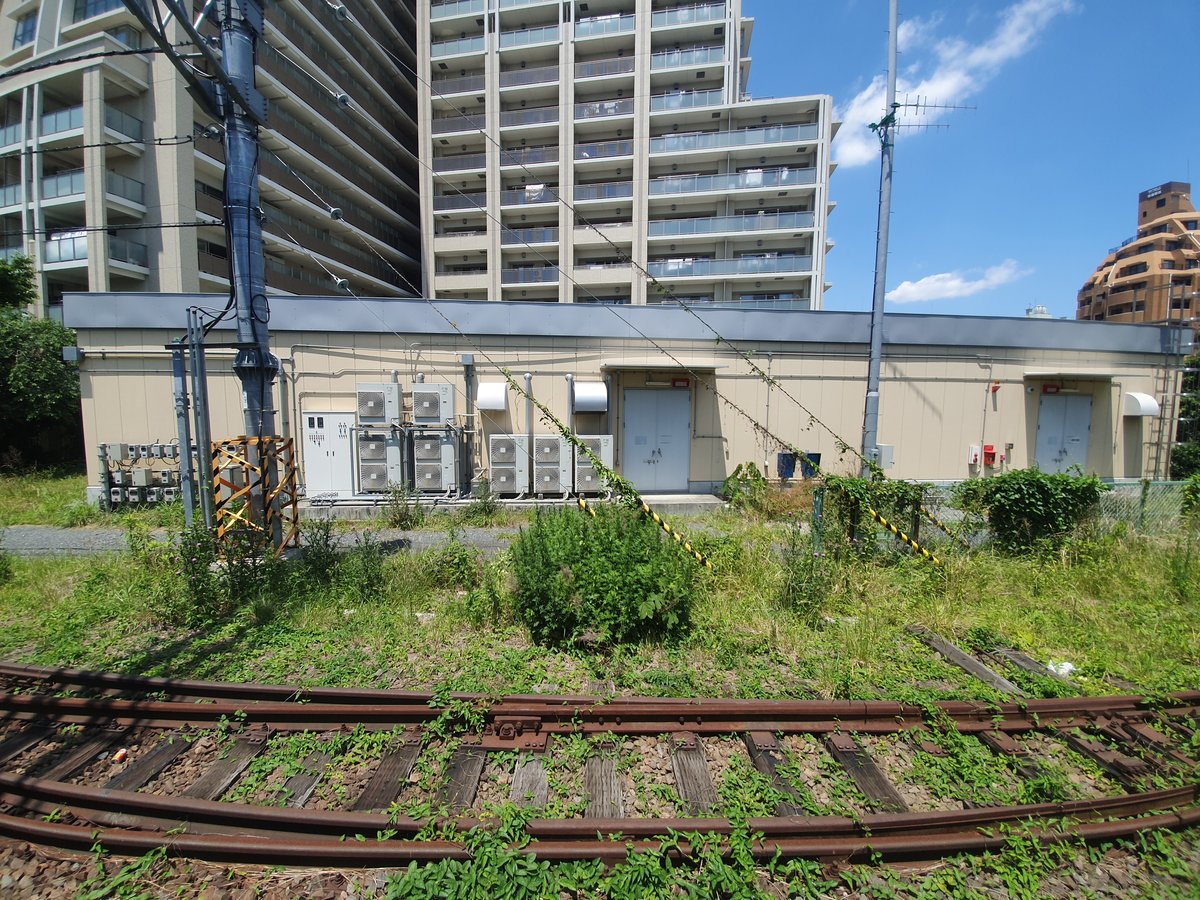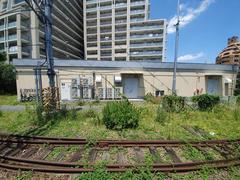
Complete Guide to Itabashi Station: Visiting Hours, Tickets, and Nearby Attractions in Tokyo
Date: 15/06/2025
Introduction
Located in the northwestern part of Tokyo’s Itabashi Ward, Itabashi Station is a vital gateway that seamlessly blends the city’s historical legacy with modern urban convenience. Established in 1885 during Japan’s rapid modernization, the station draws its name from the historic wooden plank bridge (“ita” meaning plank, “bashi” meaning bridge) that once crossed the Shakujii River—a testament to centuries of transportation heritage. Itabashi’s roots run deep as the area was once the first post town (Itabashi-shuku) on the Edo period Nakasendo highway connecting Edo (Tokyo) and Kyoto, making it a pivotal node for travelers and merchants for generations.
Today, Itabashi Station provides access to efficient transit services on the JR Saikyo Line and serves as a springboard to numerous historical and cultural sites. With nearby attractions such as the gravesite of Shinsengumi leader Isamu Kondo, the traditional streets of Itabashi-shuku, contemporary exhibitions at the Itabashi Art Museum, and the tranquil Akatsuka Botanical Gardens, the area offers visitors a wealth of experiences. The community’s vibrancy is further highlighted by events like the renowned Itabashi Fireworks Festival.
Designed for accessibility, Itabashi Station features barrier-free facilities, multilingual signage, and convenient ticketing options, including IC cards like Suica and Pasmo. Its proximity to Ikebukuro and connections to other subway lines make it a strategic hub within Tokyo’s extensive rail network.
Whether you are a history enthusiast, cultural explorer, or daily commuter, this guide provides essential details on Itabashi Station’s history, visitor amenities, transportation access, nearby attractions, and practical travel tips—inviting you to discover one of Tokyo’s most intriguing yet often overlooked destinations. (Tokyo Tsunagari, wa-mare.com, Itabashi Tourist Guide, Japan Food Guide)
Contents
- Itabashi Station Overview
- History and Development
- Visitor Information
- Station Facilities and Accessibility
- Transportation and Access
- Nearby Attractions
- Festivals and Events
- Local Culture and Community
- Practical Visitor Tips
- FAQs
- Conclusion
- Sources
Itabashi Station Overview
Itabashi Station is not just a transit point but a living testament to Tokyo’s evolution. As a crucial commuter artery on the JR Saikyo Line, it connects central Tokyo with the northern Kanto region and serves as a springboard for exploring the cultural and historical highlights of Itabashi Ward.
History and Development
Origins and Historical Role
Itabashi Station opened in 1885, aligning with Japan’s Meiji-era modernization. Its name honors the historic wooden bridge that for centuries was the region’s primary river crossing. The station’s establishment reinforced Itabashi’s status as a transportation hub, continuing its legacy from the days when Itabashi-shuku was the first post town on the Edo–Kyoto Nakasendo highway (wa-mare.com).
Urban Growth and Modernization
The 1932 formation of Itabashi Ward and subsequent urban development saw the area evolve into a residential and commercial hub. Hospitals, orphanages, and other facilities moved here, attracted by ample space and cleaner air. The introduction of the JR Saikyo Line in 1985 further cemented the station’s role as a major commuter node (Tokyo Tourists).
Visitor Information
Operating Hours
- Station Hours: Daily from 5:00 AM to 12:30 AM.
- Ticket Machines/Facilities: Accessible during station hours.
- For specific train schedules: Refer to the JR East Official Website.
Tickets and Fares
- Ticket Purchase: Automated machines and “Midori no Madoguchi” ticket office.
- IC Cards: Suica and Pasmo accepted. No special entrance fee is required to access the station.
Accessibility
- Facilities: Elevators, ramps, tactile paving, and accessible restrooms.
- Language Support: Signage in Japanese and English; multilingual pamphlets available at the Itabashi Tourist Center (Itabashi Tourist Guide).
Station Facilities and Accessibility
- Platform: One island platform serving two tracks on the JR Saikyo Line (Wikipedia).
- Ticket Gates: Automated machines and staffed office; IC card recharge available.
- Amenities: Waiting areas, clean restrooms (including accessible stalls and baby-changing stations), coin lockers, convenience stores, soba noodle stand.
- Wi-Fi and Charging: Public Wi-Fi and device charging points.
- Safety: CCTV, AEDs, emergency call buttons, and clear evacuation routes.
- Baggage: Coin lockers with multilingual instructions and IC card payment.
- Information Services: Staffed counter, English pamphlets, and tourist maps (Itabashi Tourist Guide).
Transportation and Access
- JR Saikyo Line: Connects Ōsaki (Tokyo) to Ōmiya (Saitama), with direct trains to Kawagoe and Shin-Kiba.
- Nearby Stations: Close to Shin-Itabashi (Toei Mita Line) and Naka-Itabashi (Tobu Tojo Line).
- Bus and Taxi: Adjacent bus stops and taxi stands for local travel.
- Bicycle: Ample bicycle parking and nearby rentals for eco-friendly exploration.
Nearby Attractions
Historical and Cultural Sites
- Isami Kondo’s Grave: Memorial site for the Shinsengumi leader, open year-round with paved paths and informative signage (iamkimura.com).
- Itabashi-shuku: Explore remnants of the Edo-period post town, traditional temples like Tokoji, and historic shopping streets (Japan Travel).
- Tenso Jinja Shrine: Features a historic torii gate and annual festivals, open daily (rodsshinto.com).
Museums and Art Spaces
- Itabashi Art Museum: Showcases local and international art, open Tuesday–Sunday, wheelchair accessible (Japan Food Guide).
Parks and Nature
- Akatsuka Botanical Garden: Offers seasonal blooms and peaceful walking paths.
- Asukayama Park: Renowned for cherry blossoms and open spaces.
Shopping Streets
- Nakajuku Shopping Street & Happy Road Oyama: Bustling arcades with shops, eateries, and regular community events (wa-mare.com).
Relaxation
- Takashimadaira Onsen: Traditional bathhouse, wheelchair accessible, open daily (Japan Food Guide).
Festivals and Events
Itabashi Fireworks Festival
- When: First Saturday of August, 7:00 PM–8:30 PM.
- Highlights: Over 13,000 fireworks, including the massive “Shakugosundama.”
- Admission: Free for general areas; reserved/VIP seating available for a fee, bookable online from June.
- Accessibility: Designated wheelchair areas, multilingual food stalls, and comprehensive crowd management (Japan Food Guide).
Seven Lucky Gods Walking Tour
- When: January.
- Details: Free, advance reservation required via the Itabashi Tourist Center; guided by local volunteers (Itabashi Tourist Center).
Local Culture and Community
- Itabashi Tourist Center: Hub for information, local goods, and volunteer-guided tours (“Motenashitai”); tours can be reserved in advance.
- Cultural Exchange: Historic ties with Kanazawa City and traditions like the snow ice delivery.
- Neighborhoods: Tokiwadai (residential), Shimura (historic shrines), Akatsuka (parks), and Takashimadaira (onsen, riverside walks).
Practical Visitor Tips
- Best Visiting Seasons: Spring (cherry blossoms) and autumn (mild weather).
- Facilities: Convenience stores, cafes, and clean public restrooms throughout the area.
- Safety: The area is considered safe and welcoming.
- Navigation: Bilingual signage and clear station layouts.
- Accessibility: Barrier-free design throughout the station and most attractions.
- Event Etiquette: Arrive early for festivals, follow local rules (no smoking/drone use), and dispose of trash properly.
FAQs
Q: What are Itabashi Station’s operating hours?
A: 5:00 AM to 12:30 AM daily.
Q: How do I purchase tickets?
A: At automated machines or the ticket office; Suica and Pasmo cards are accepted.
Q: Is the station accessible for travelers with disabilities?
A: Yes, with elevators, tactile paving, accessible restrooms, and barrier-free design.
Q: Are guided tours available?
A: Free volunteer-guided tours can be reserved at the Itabashi Tourist Center.
Q: What major attractions are nearby?
A: Shinsengumi graves, Itabashi-shuku, Itabashi Art Museum, Akatsuka Botanical Garden, and local shopping arcades.
Conclusion
Itabashi Station is a vibrant entry point into Tokyo’s storied past and dynamic present. With modern facilities, seamless transport links, and proximity to historical sites, festivals, and community events, it offers a rewarding experience for all types of visitors. The station’s commitment to accessibility, safety, and hospitality ensures a comfortable and enriching visit. To plan your trip, access real-time updates, and discover more about Tokyo’s hidden gems, download the Audiala app and visit official resources such as the JR East Official Website and the Itabashi Tourist Center. Embark on your Itabashi adventure and experience a unique blend of tradition and modernity in Tokyo’s northern gateway. (Tokyo Tsunagari, Japan Food Guide, Itabashi Tourist Guide)
Sources
- Tokyo Tsunagari
- wa-mare.com
- Itabashi Tourist Guide
- Japan Food Guide
- JR East Official Website
- Itabashi Tourist Center
- iamkimura.com
- rodsshinto.com
- Japan Travel
- Wikipedia






























































































































































































































